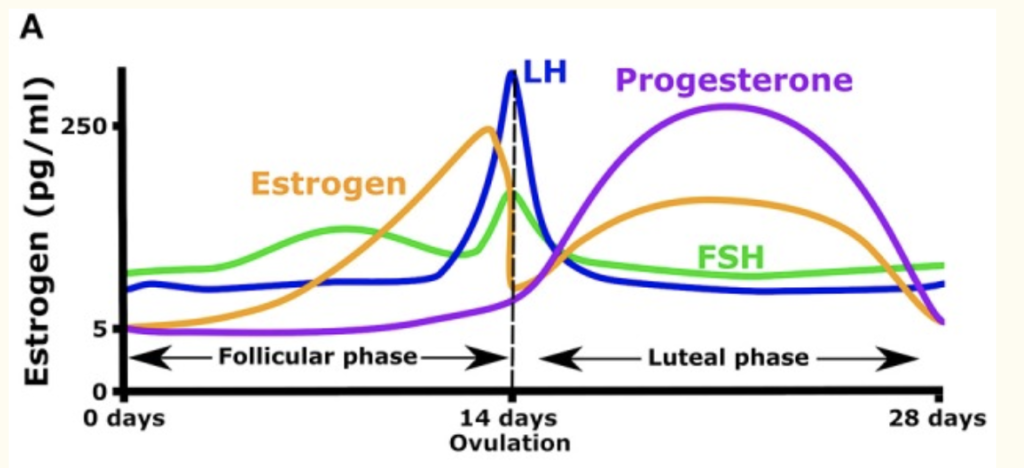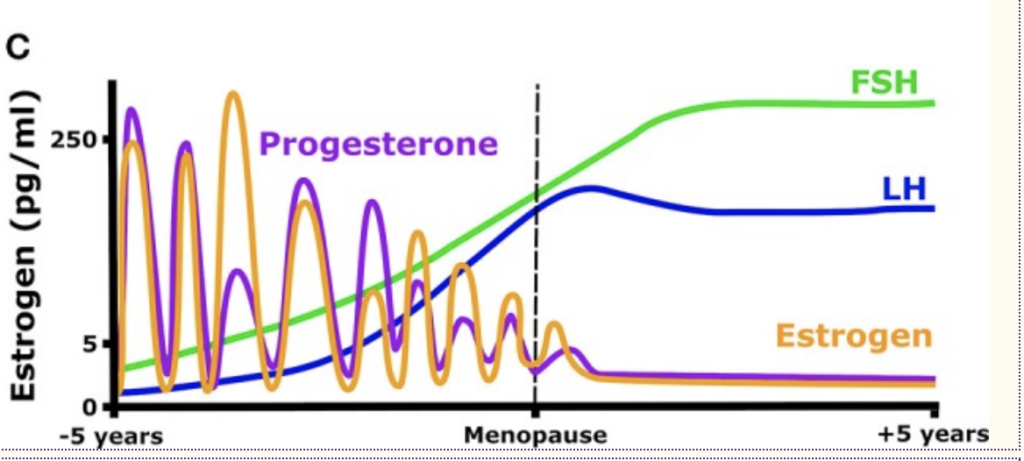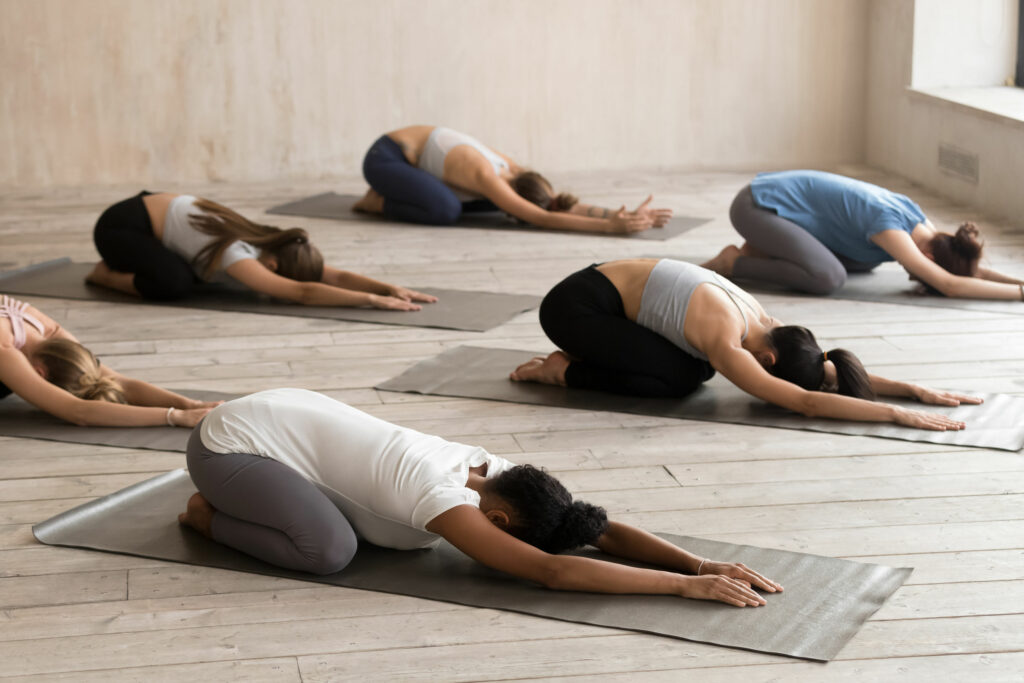Post-Menopause Training Guide

In this post:
- How we get here
- Flash forward to now:
- Symptoms you may notice
- Various medical and natural treatment options
- The stress response and its impact on you
- Why overtraining and under-fueling will backfire on you post-menopause
- Creating a polarized sequence of exercise and rest drives results post-menopause
- The 3 training types that will support your goals
- Why you need more protein than you did before
- Whole food carbs and healthy fat
- Eating enough for your needs daily
- How to put it all together: the post menopause training trifecta!
- Access my post-menopause exercise plans
- Find my Perimenopause Training Guide here!
 The way I picture myself at about 75!
The way I picture myself at about 75!
Calling my ladies who are post menopause! This one is for you.
I hear from many women that their concerns about weight gain, hot flashes, bone loss, muscle loss and more are dismissed or diminished, minimized or told “that’s just the aging process.” I know that the changes you’re experiencing can make you feel really powerless, helpless and like your body is a stranger to you.
I might not have all the answers about what you’re experiencing, because we each have a unique health history and needs – but I do have some excellent custom training and nutrition strategies that work for women post menopause thanks to my continuing education and research. I’ll be here soon myself too, and I’m committed to getting this information into your hands so you can continue to build strength, lose body fat and enjoy better energy and mobility for years to come.
After all, it’s the things we do today that set us up for the woman we’ll be in the future!
How we get here
When we’re in our regular cycling years, the fluctuations between estrogen and progesterone that happen with our monthly menstrual cycle give us an “edge” when it comes to building muscle and lowering body fat.
Estrogen has a lot of key functions and it impacts us on nearly every level. It affects our mood, our appetite control, bone health, our ability to regulate our body temperature, build muscle and so much more. Progesterone counters estrogen’s effects and supports the growth of the uterine lining primarily, but it also keeps the body in equilibrium. They’re like point and counterpoint in a melody that plays over and over each month.
That regular cycle of estrogen and progesterone fluctuating back and forth means we recover a bit more easily, have more resilience to training more frequently, can regulate our body temperature, and have an easier time rebuilding muscle.
Here’s what that looks like (28 day cycle just for illustrative purposes, women have all different lengths of cycles that are normal):

Additionally, we had our highest levels of testosterone during this time of our lives. Testosterone is really important for women, and contributes to our libido function and the growth and renewal of our bone and body tissue (including our muscle tissue).
Muscle tissue is what we call “metabolic currency.” The more muscle you carry, the more efficiently you burn fat and regulate many body functions. This is the body tissue we most want to hold onto as we go into perimenopause and then post menopause. Muscle tissue doesn’t make us bulky, it gives us our tone, tightness and strength in all we do.
Further contributing to why it was easier for you to build and hold onto your muscle tone back then (despite all the diets you probably tried lol), is we absorb more of the amino acids from the protein we eat during this life stage, providing us with maximum access to the building blocks our bodies need for repair and regrowth of muscle after we worked out.
I’m not saying we didn’t have to “work” for our results back then, but it was a lot easier than it became later in life for some of these reasons.
Perimenopause is that transition phase when your menstrual cycle starts becoming erratic, and the hormone levels can become imbalanced as a result. Since most of our sex hormones are produced in our ovaries, as we have more sporadic and less menstrual cycles we’re producing less and less of these essential hormones that do so many important things for us.
That’s the life stage when you may first have started to notice your body not responding as easily as it did before. That might be when you started to struggle with your energy or weight, mood, sleep, and body temperature.
That’s represented on the left side of this chart – where the estrogen and progesterone lines start to go all over the place:

While testosterone is not represented on that chart, it is also starting to decline in perimenopause. And that also adds to the symptoms you may start to notice.
Flash forward to now
Post menopause, our cycle has stopped completely and estrogen and progesterone levels have dropped down. So has testosterone. That’s the right side of the chart above.
Symptoms you may experience include:
- weight gain
- muscle and bone loss
- erratic or lower energy
- disrupted sleep
- hot flashes
- mood swings
- dry skin
- sore joints
Addressing these symptoms
Some of the symptoms you may experience can be addressed and mitigated by working with your doctor to monitor your hormone levels and consider using some type of hormone replacement therapy (HRT) to help ease the transition symptoms and support energy levels. Bio-identical hormones can help you manage things like mood swings and hot flashes.
If you’re interested in hormone replacement therapy and hearing about the different options available I had a conversation with my functional medicine doctor where she went over the different treatment options, and why she recommends some over others. That starts around the halfway point of this podcast.
It’s ideal to get blood work or using something like a DUTCH test (urine test, prescribed by your doctor) to determine what is right for you.

Supplements like DHEA, a commonly available supplement that acts as a precursor to testosterone and estrogen can be useful in stimulating their production (I recommend working with a doctor on dosing and determining if this is appropriate for you).
The stress response and its impact on you
While the majority of your sex hormones are made in your ovaries, some are made by your adrenal glands. This is one of the reasons I am always talking about (and working myself on) being proactive with stress management, in order to support a healthy stress response. You can support the production of some of your hormones over time, even post menopause with healthy adrenal function.
So many women in my community tell me about the stress they are dealing with. They make time for exercise and they’re doing pretty well with their nutrient intake. But they are still struggling with seeing fat loss. Constant stress can impact our HPA (hypothalamic-pituitary-adrenal) axis. This is how the body regulates our hormone balance in response to stress, which can increase the levels of cortisol in our system causing more fat storage and muscle breakdown.
This is the time to start a daily meditation practice or start making it a priority if you’ve fallen out of the habit. Even if you take 5 minutes to sit and breathe or listen to the sounds of nature (the Calm app is a great tool) this practice can help ground you, bring you back into equilibrium, and over time help you develop more resilience to the stress you face. Be mindful of not over-consuming caffeine, as this can increase cortisol levels as well.

Exercising regularly helps you strengthen the muscle tissue you need to handle daily tasks, and meditating regularly helps strengthen the mental muscle you need to handle daily stress.
Adaptogenic herbs are also promising for supporting the body’s stress response and hormone levels, in some cases helping to balance these levels. You might enjoy the article I wrote where I feature six adaptogenic herbs and go over their properties. That’s just the tip of the iceberg and there are so many natural herbal supplements that can support your hormones – and what you need is going to be unique to you. I would also recommend getting some type of hormone testing done to see what might be right for you here as well. While herbs are gentle, they still impact your body and it’s good to customize.
Just knowing that the body is changing and that we won’t “bounce back” as quickly from an injury, or build strength as quickly means that self-care and consistency with stress managing techniques are invaluable.

We lose collagen and elastin over time and being more proactive with warming up and cooling down around workouts, stretching, mobility work and doing more yoga can really help you keep you limber and flexible, and support joint health (more on that coming right up!).
Overtraining and under-fueling will backfire on you post menopause.
When it comes to your workouts, staying active and being consistent with your training is important – but this is the life stage where we want to get strategic about our training, rest days and eating habits rather than trying to follow every diet and every influencer with 6-pack abs.
Because what I see a lot of women do is inadvertently make things harder for themselves by training more and eating less – which actually has the opposite effect they intend by creating a greater inflammatory response in the body, and a greater loss of muscle and increase in fat storage.
I think one of the reasons a lot of women accidentally overtrain post-menopause is because they expect that they are getting results during their workout – so “more workouts must equal more results.”
But actually, muscle tissue does not develop or strengthen when you are exercising. It develops and strengthens after you work out, after you have challenged yourself, when you are resting and refueling.

Some of the featured meals in My Dinner Plan! Recipes and eating plans for 6 months laid out for you to use again and again!
Same reasoning seems to go with why we under-fuel – we think eating less means we’re going to become smaller. When actually, depriving the body of nutrients means we create a stressful environment internally that deprives us of the building blocks we need to hold onto our muscle, weakens our bones, diminishes our energy, and creates more fat storage.
During the post-menopause life stage, we need a little bit more of a workout stimulus to get those adaptations, a little bit more of a protein stimulus, and a little bit more of a recovery period to support the tissue to repair and regrowth process. This is the path to seeing results again – we just have to dial in our approach a little bit. This is all totally accessible to you, and I’ll show you how!
Creating a polarized sequence of exercise and rest drives results post-menopause
When you work out you’re creating an inflammatory response in your tissue by creating micro tears in the muscle. This is why I always say “exercise is a healthy stress when we are healthy,” because exercising on an already stressed out system doesn’t contribute to muscle strength or fat loss – it creates more muscle loss and can be a contributing factor in fat storage.
If you don’t get enough rest, you will stay in an inflamed state from your workouts, and not be able to repair the muscle tissue – which means you’ll always be losing it faster than you can rebuild it. This is where a lot of women go wrong – they keep training and training thinking that they’re going to lose the weight, but it’s actually keeping them stuck in an inflamed state that contributes to weight gain and muscle loss. Not to mention, a heightened state of inflammation doens’t do us any favors in general – contributing to achy joints and soreness that doesn’t go away.

The rest you need post-menopause is significant to pay attention to because you don’t have the same “bounce back” resilience you used to have from the estrogen/progesterone cycling.
In the past you could recover much more quickly, thanks for the higher levels of your key hormones. But at this stage of life, we need to get smarter about creating an effective stimulus with the workouts we do, and a long enough recovery period so the body can repair and regrow in the absence of these hormones.
An “effective stimulus” means that your training is challenging enough to stimulate the muscle tissue to respond and fat to mobilize (in the next section I will detail exactly what to do). That’s going to be subjective to each of us of course, what’s challenging for you will depend on what you’ve been doing before – so work within your limits and watch out for programs that are going to just run your energy into the ground.

We want to create a more polarized workout experience, where we go hard then rest well – and stay out of the “grey zone” doing workouts day after day that aren’t that challenging.
When you do workouts that really challenge YOU, triggering that adaptive response (and inflammatory response) you’ll need to be fully recovered before you tackle your next workout, or your body will just keep constantly breaking down your muscle without having the chance to rebuild. Losing more muscle than you can rebuild means less metabolic flexibility, less strength, and less mobility.
The 3 training types that will support your goals
There are three specific types of training that will help you improve your muscle and bone density, and lose body fat:
- resistance training,
- high-intensity interval training (explosive cardio, plyometrics, tabatas, sprint training – all of these can be types of HIIT),
- and the self care training types you do around your workouts, like yoga, mobility and stretching.
(Of course you can enjoy many types of exercise – these are not the only things available! But including them in some form each week is going to really support you in strengthening and maintaining muscle and bone density, and losing body fat.)

ONE: Resistance training is incredibly beneficial for your body, and what amount of resistance is right for you depends on what you’ve been doing before. Here’s a guide to help you find where you are now, and what the next steps are:
- If you’re new to training and building a base, bodyweight training can be a great way to build a strong foundation.
- If you’ve mostly been doing bodyweight training, now is the time to explore how you can make that more challenging and start to either add some weighted objects to some moves you’re doing.
- If you’ve been doing some training with equipment (like dumbbells or bands for instance), now is the time to get more specific with the way you approach using that weight. If you can start to work within rep ranges – say 8-12 to start – you give yourself a ceiling of how much weight is appropriate for you and a benchmark to get stronger from. So if you choose a weight amount for a biceps curl and you can do 20 reps with it, go heavier. Find a weight amount that makes it very hard to go past 12 reps, but that you can do at least 8 with. You will need to do some experimenting but try different things out.
- As you build confidence with this type of training, you will get stronger. You will need heavier weights to do the same amount of reps as before so keep going! If you start finding an 8 rep that is fatiguing, you can build into lower rep ranges and heavier resistance, working into a 4-6 rep range. This might mean you want to expand your collection of home equipment, or go to the gym and start using the options they have.
But whatever you do, wherever you’re at, the goal is to work against enough of a load where you are challenged because that is what will stimulate your tissue to respond in the absence of that anabolic (muscle supporting) estrogen.
TWO: High intensity interval training or HIIT is short-burst cardio. Plyometrics, jumping, sprint training, interval training, etc – all helps get your heart rate up for a short duration helping to efficiently mobilize fat.

Rather than making every cardio session a long slow distance workout of repetitive impact on your joints, short-burst training is highly efficient and yields better results in the long run. It contributes to strong joints, and strengthens your muscle tissue. You can do it on the same day as your resistance training or do low impact resistance training one day, and dedicated HIIT training another day.
If you struggle with cardio, short-burst training can be a great way to slowly ramp it up. If you need to do a lower impact version of a HIIT move, do what gets your heart rate up and take a modified version as you are getting stronger.
I hear from a lot of post menopausal runners who notice more aches and pains than they used to. That is a sure sign their body is not able to recover – either because they’re not resting enough to handle the inflammatory burden created by their training, and/or they’re not eating enough protein to support the repair process their body goes through after their training session. If the long, slow distance is something you really enjoy, work it in more strategically (probably a little less, and pair it with more resistance training to strengthen the muscles around your joints) rather than making it the only way you’re training.
THREE: Yoga, mobility and stretching
This is a the time to focus on keeping your muscle tissue healthy. You may need a little more of a warm up before your workouts than you used to – and if you’re training at a higher level you definitely want to be warmed up going in. Sometimes..


